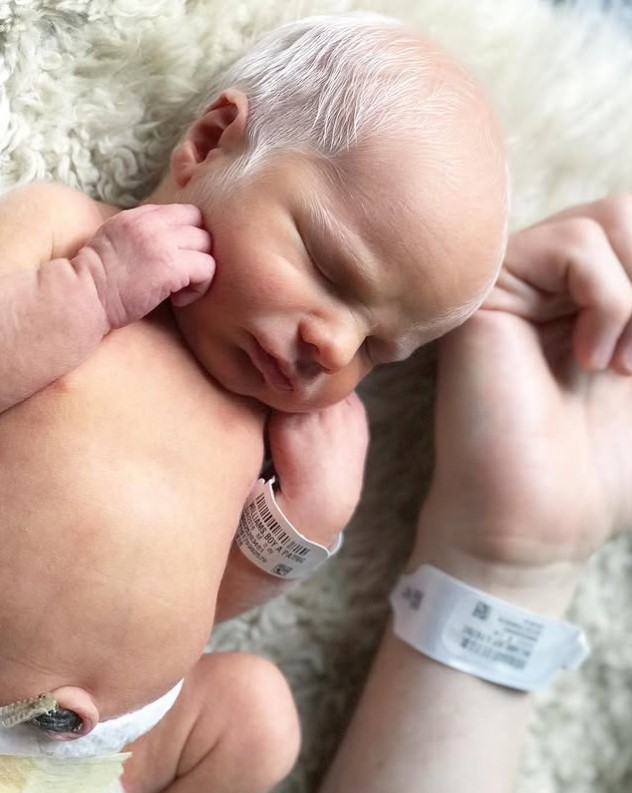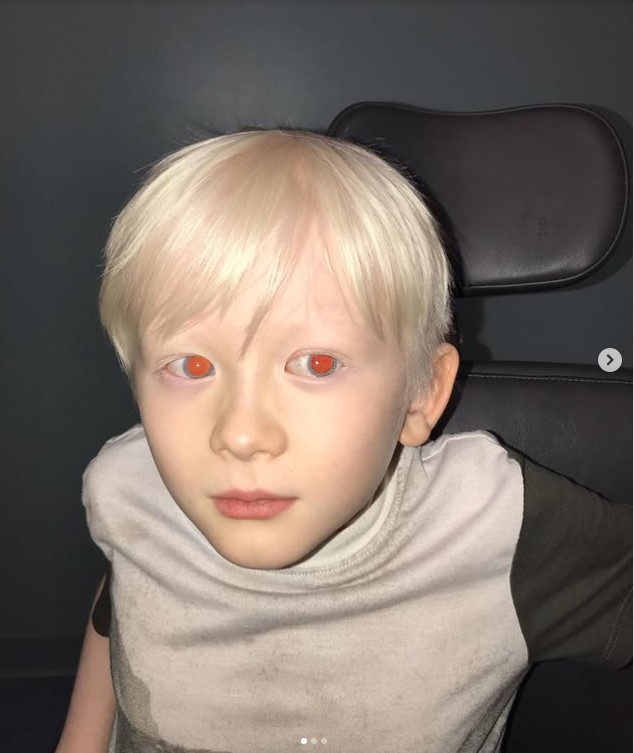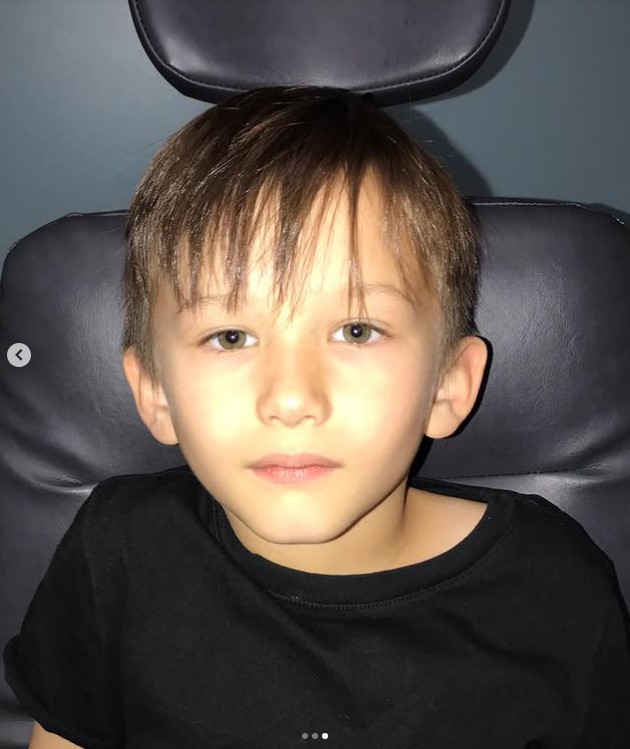Albinism, a genetic condition that affects pigmentation, is often misunderstood, and its sufferers are sometimes subjected to unwarranted judgments. Patricia Williams’ son, Redd, was born with albinism, and his journey is a powerful reminder of the importance of awareness, acceptance, and kindness. This story highlights the challenges that come with albinism but also the immense growth, love, and resilience that can emerge.
Redd’s Birth and Early Signs of Albinism

In 2012, Patricia Williams gave birth to her son, Redd. From the moment he was born, Redd’s appearance was unique—he had white hair and strikingly light blue eyes. It wasn’t until he was around two months old that Patricia noticed something unusual: his eyes would move side to side in a way that she hadn’t seen with her other children. Concerned, her husband, Dale, turned to Google and learned that this could be a symptom of albinism. They decided to seek professional help, and after visiting an optometrist and genetic specialists, it was confirmed that Redd had Oculocutaneous Albinism Type 1 (OCA1), a condition that affects approximately 1 in 17,000 people globally.

Source:
Albinism and Its Impact on the Family

At first, Patricia didn’t think much of Redd’s appearance, as she and her husband both had blonde hair, and it seemed like a normal variation. However, over time, she noticed that his hair sparkled in the sun, and his eyes would track unnaturally. His eyes were so light that they appeared to sparkle red in certain lighting conditions. Patricia and her family learned that albinism was not something that could be outgrown, especially after the birth of their second son, Rockwell, who also had the condition.
Rockwell’s birth in February 2018 brought unexpected attention. His newborn images were unfortunately turned into cruel memes by people on social media. This, however, was not the family’s first encounter with bullying. Redd, as a child, had also faced teasing for looking different, but his older brother, Gage, had always been there to protect him.
Despite these challenges, Patricia and Dale decided not to dwell on the negative. Instead, they became advocates for raising awareness about albinism to prevent other children from being bullied for something beyond their control.
Source:
Raising Awareness and Challenging Misconceptions

As Redd grew older, he underwent surgery for strabismus (a condition where the eyes do not properly align), which was a significant step in his development. This surgery, instead of using an eye patch, helped him avoid unnecessary attention and made him feel more comfortable in social settings. Redd transitioned from a private school for children with visual impairments to a public school, where his peers learned to focus less on his differences and more on his personality. His friends recognized that Redd simply needed protective measures, like hats, dark sunglasses, and sunscreen, to participate in outdoor activities—just like any other child.
Patricia noticed that, as Redd’s classmates grew accustomed to his needs, they began to accept him without judgment. This shift in attitude was a pivotal moment for Redd and his family, reinforcing the importance of educating others about albinism and promoting understanding.
In 2023, Patricia shared a heartwarming clip of Rockwell at his school’s “Western Day,” and this time, the response was overwhelmingly positive. Social media users admired his cuteness and expressed appreciation for his uniqueness. The family had come a long way from the days when their photos were used in cruel memes.
Source:
Debunking Myths and Promoting Acceptance

There are many misconceptions about albinism, one of the most common being that people with albinism have red eyes. Patricia explains that people with albinism typically have light blue eyes due to the lack of pigment in their irises. This misinformation often perpetuates stereotypes, but through their advocacy, Patricia and her family have been able to educate others about the realities of the condition.
Redd and Rockwell are now thriving. They continue to flourish in a supportive environment where they are loved and accepted for who they are. Patricia’s message is clear: children with albinism, like all children, deserve to be treated with respect and understanding.
Source:
Conclusion: A Story of Resilience and Love
The Williams family’s journey is a beautiful testament to the strength of love, resilience, and education. Despite the challenges they faced, Redd and Rockwell have flourished and are living their best lives, thanks to the unwavering support of their parents and their commitment to spreading awareness about albinism.
Patricia’s decision to share her children’s story on social media has not only helped raise awareness but also fostered an environment of acceptance and kindness. This story serves as an important reminder that true beauty lies within, and we should all strive to be more understanding and compassionate toward those who are different.
Sources:
-
American Academy of Ophthalmology – Albinism: Understanding the Condition
-
National Organization for Albinism and Hypopigmentation – Understanding Albinism
-
The Albinism Fellowship – Strabismus and Eye Care in Albinism